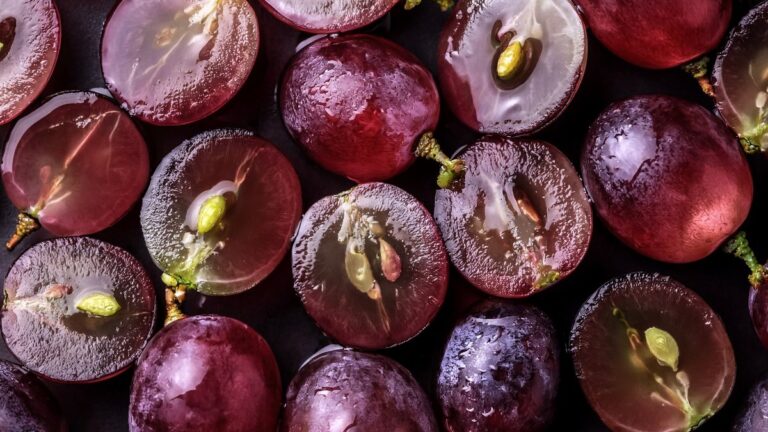Whitfield County, Georgia, is an area renowned for its rich agricultural heritage and diverse farming practices. While the county’s agricultural landscape is home to a variety of livestock, certain species stand out as particularly important to local farmers and the regional economy. In this article, we’ll explore what is the highest livestock species in Whitfield County, GA, looking at the types of livestock, their economic significance, and the factors that contribute to their prominence in the region.
Overview of Livestock Farming in Whitfield County, GA
Whitfield County is located in the northwestern part of Georgia, known for its fertile soil and favorable climate for farming. Agriculture is one of the pillars of the local economy, with a mix of crop production and livestock farming. Livestock farming in Whitfield County plays a vital role in supporting the county’s agricultural heritage and providing economic benefits to local farmers and communities.
Types of Livestock in Whitfield County
Several types of livestock are raised in Whitfield County, including cattle, poultry, goats, sheep, and hogs. However, the county is particularly known for its focus on specific species based on regional preferences, market demands, and farming practices.
Among these, cattle are generally recognized as the highest livestock species in Whitfield County. The region’s cattle farming is well-established and forms a cornerstone of the county’s agricultural landscape.
Why Are Cattle the Highest Livestock Species in Whitfield County, GA?
1. Economic Impact of Cattle Farming
Cattle farming has long been a key industry in Whitfield County, and the numbers reflect this. According to recent data from the U.S. Department of Agriculture (USDA), Whitfield County has one of the largest cattle populations in Georgia. This makes cattle the most economically significant livestock species in the area.
In 2020, Whitfield County had an estimated 14,000 head of cattle across various farms. This number has steadily increased over the past few years, driven by strong market demand for beef and other cattle-related products. Cattle are primarily raised for beef production, and the county’s farmers benefit from a variety of associated industries, including feed supply, veterinary care, and equipment sales.
2. Favorable Climate and Geography for Cattle Farming
Whitfield County offers ideal conditions for raising cattle. Its rolling hills and open pastures provide the right environment for grazing, while its moderate climate ensures a year-round growing season for grass and forage crops. These factors make it easier for farmers to maintain healthy cattle herds and sustain long-term livestock production.
3. Market Demand for Beef
Cattle farming is a profitable venture in Whitfield County due to the high demand for beef both locally and nationally. Georgia is among the top beef-producing states in the U.S., and Whitfield County is a significant player in the state’s cattle industry. The proximity to major highways and railroads also allows for efficient transportation of cattle to regional and national markets, ensuring steady sales and economic stability for local farmers.
4. Supportive Agricultural Infrastructure
The county’s agricultural infrastructure also plays a role in supporting the growth of the cattle industry. Whitfield County has access to well-established agricultural services, including livestock auctions, feed mills, and processing plants. Additionally, numerous local agricultural extension programs offer resources and expertise to cattle farmers, helping them manage and improve their operations.
Other Livestock Species in Whitfield County
While cattle are the highest livestock species in Whitfield County, there are several other species that also contribute to the county’s agricultural economy.
1. Poultry
Poultry farming is another significant part of Whitfield County’s agricultural sector. The area’s poultry farmers primarily focus on the production of broilers (meat chickens) and eggs. While poultry farming doesn’t match cattle farming in terms of total value, it remains a key component of the county’s agricultural diversity.
2. Goats
Goat farming, especially for meat (chevon or goat meat) and milk, has been growing in popularity in Whitfield County. Goats are well-suited to the county’s terrain and are increasingly seen as a viable option for small and medium-sized farms.
3. Hogs and Sheep
Hog farming and sheep farming are relatively smaller industries in Whitfield County but still contribute to the overall agricultural diversity. Hog farming is often done on a smaller scale, while sheep are raised primarily for wool and meat production.
Challenges Facing Livestock Farmers in Whitfield County
Despite the success of cattle farming in Whitfield County, there are several challenges that farmers face. Some of these include:
- Weather-related Issues: Georgia’s climate can sometimes be unpredictable, with periods of drought or heavy rainfall that can affect pasture quality and cattle health.
- Market Volatility: The prices of cattle and beef can fluctuate due to market conditions, which makes it difficult for farmers to predict profits year to year.
- Feed Costs: Feed is a significant cost for livestock farmers. Rising grain prices and other input costs can impact profit margins.
- Labor Shortages: Like many rural areas, Whitfield County faces challenges in attracting and retaining labor for agricultural operations, which can impact productivity.
The Future of Cattle Farming in Whitfield County
Looking ahead, the future of cattle farming in Whitfield County appears promising. The county’s farmers are adopting more modern practices, including rotational grazing and genetic improvements, to increase cattle productivity and sustainability. Furthermore, there is growing interest in sustainable farming practices, which could play a key role in shaping the future of livestock farming in the region.
Additionally, the ongoing expansion of local beef processing facilities could help reduce transportation costs and increase the market share of locally produced beef. This shift toward local, sustainable beef production could help maintain cattle as the highest livestock species in Whitfield County for years to come.
Key Statistics: Livestock in Whitfield County, GA
To better understand the role of livestock in Whitfield County, here’s a summary of key statistics:

Conclusion
In conclusion, the highest livestock species in Whitfield County, GA, is undoubtedly cattle. The county’s favorable climate, robust agricultural infrastructure, and strong market demand for beef have all contributed to the prominence of cattle farming in the area. Although other species such as poultry, goats, and sheep play an important role, cattle remain the dominant livestock species in Whitfield County, driving the local economy and shaping the agricultural landscape.
FAQs
- What is the primary livestock species in Whitfield County, GA?
- Cattle are the primary livestock species in Whitfield County, GA, both in terms of population and economic impact.
- How many cattle are raised in Whitfield County, GA?
- There are approximately 14,000 head of cattle raised in Whitfield County, GA.
- What other livestock species are common in Whitfield County, GA?
- Poultry, goats, and hogs are also raised in Whitfield County, though cattle remain the highest species.
- Why is cattle farming important in Whitfield County?
- Cattle farming is important because it contributes significantly to the local economy through beef production and related industries.
- What challenges do cattle farmers face in Whitfield County?
- Challenges include weather-related issues, market volatility, rising feed costs, and labor shortages.
- What is the future of cattle farming in Whitfield County?
- The future looks promising, with a focus on sustainable farming practices, modern technology, and local beef processing facilities.











